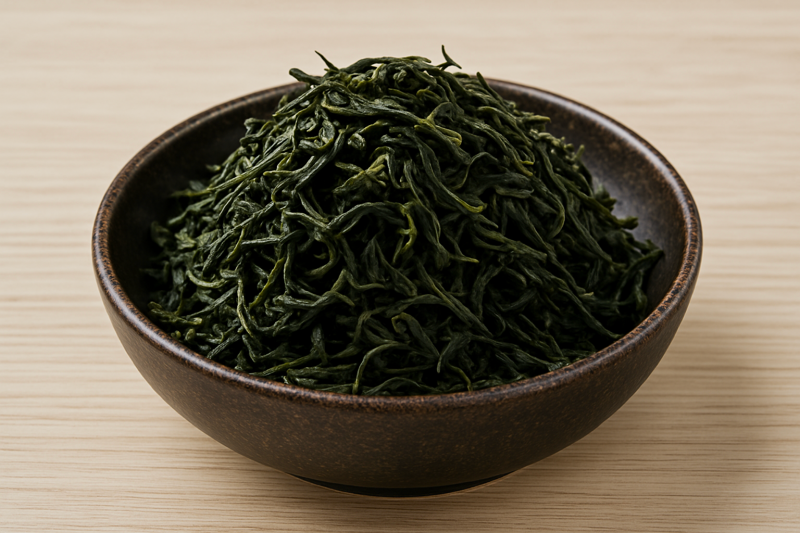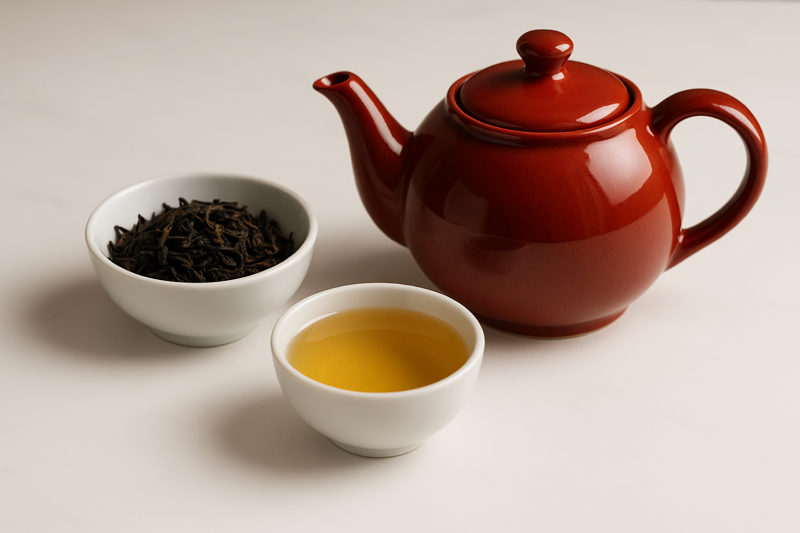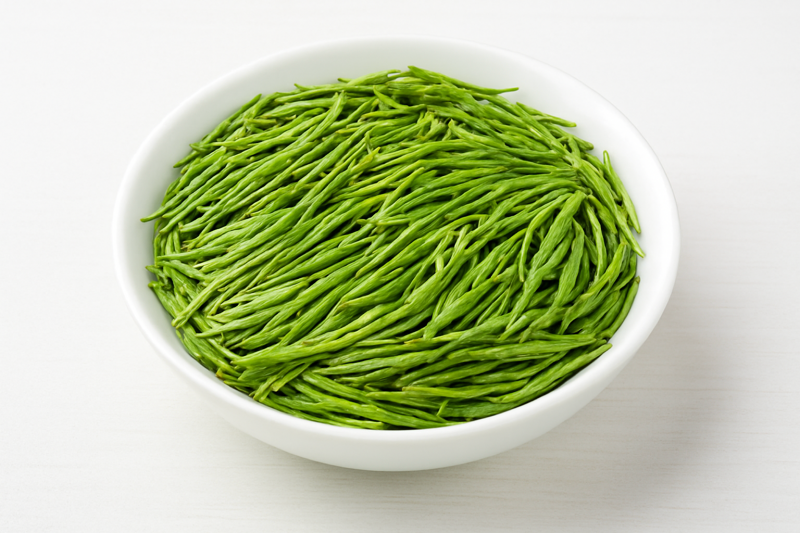Huangshan Maofeng
Tender buds, orchid fragrance, and lingering sweetness from Anhui’s misty peaks.
- Category: Green tea (Camellia sinensis), pan-fired.
- Origin: China — Huangshan (Yellow Mountain), Anhui Province.
- Harvest: Early spring (before Qingming and Guyu festivals), using young buds and first leaves.
- Grade: Pre-Qingming Huangshan Maofeng; Guyu Harvest; Standard Huangshan Maofeng



Tasting Profile
Brewing Guide
- Tea-to-water ratio~3–4 g leaves per 200 ml water.
- Water temperature75–80 °C (167–176 °F) to preserve delicate flavors.
- Steeping timeFirst infusion: 1–2 minutes; subsequent infusions: 30–60 seconds.
- Infusions2–3 infusions; first brings floral aroma and sweetness, later ones lighter and refreshing.
Background & Story
Huangshan Maofeng, literally meaning “Yellow Mountain Fur Peak,” is one of China’s most renowned green teas and a member of the country’s “Ten Famous Teas.” It is produced in the misty peaks of the Huangshan (Yellow Mountain) region in Anhui Province, an area long celebrated for its natural beauty and ideal tea-growing conditions. The tea is distinguished by its slender, slightly curved leaves covered in fine white downy hairs, resembling the peak of a mountain, which inspired its poetic name.
The origins of Huangshan Maofeng date back to the late Qing dynasty in the 19th century, when a tea merchant from She County perfected its production techniques. Since then, it has become a symbol of Anhui’s tea culture, treasured for its elegance and refinement. The unique terroir of Huangshan, with its cool, misty climate, mineral-rich soil, and high elevation, contributes greatly to the tea’s delicate flavor and aroma.
Harvesting takes place in early spring, particularly before Qingming (early April) and Guyu (late April). Only the tender buds and the youngest leaves are hand-picked, ensuring freshness and high quality. After harvesting, the leaves are pan-fired to stop oxidation, then carefully hand-rolled and dried. This process preserves the tea’s fine downy hairs and locks in its orchid-like fragrance and mellow sweetness.
When brewed, Huangshan Maofeng produces a pale jade liquor with a soothing floral aroma reminiscent of orchids and wildflowers. Its flavor is smooth and sweet with subtle vegetal notes and a gentle chestnut undertone. Unlike some stronger green teas, Huangshan Maofeng is known for its soft elegance, making it approachable for both seasoned tea drinkers and newcomers.
Today, Huangshan Maofeng continues to be celebrated in China and internationally as a tea that represents purity, refinement, and the artistry of Chinese tea craftsmanship.
Benefits
- Rich in antioxidants that help protect cells from oxidative stress
- Supports cardiovascular health by aiding circulation and cholesterol balance
- Contains L-theanine and caffeine for calm focus and gentle energy
- Helps boost immunity with vitamins and minerals from fresh spring leaves
- Gentle on the stomach with a smooth, mellow flavor suitable for daily drinking
Serving Suggestions
Pairings
- Light seafood such as steamed fish or shrimp
- Mild stir-fried greens like spinach or bok choy
- Fresh fruit, especially pears, peaches, or melon
- Simple dim sum items such as dumplings or spring rolls
- Delicate pastries or sponge cakes to match its floral sweetness
Teaware
- Gaiwan (traditional Chinese lidded cup for appreciating aroma and clarity)
- Glass teapot (to showcase the fine downy leaves unfurling)
- Fairness pitcher (cha hai) for even pouring and balanced flavor
Nutrition Facts
Serving Size: 1 cup brewed Huangshan Maofeng (240 ml)
| Nutrient | Amount per Serving | % Daily Value* |
|---|---|---|
| Calories | 0 | 0% |
| Total Fat | 0 g | 0% |
| Sodium | 0 mg | 0% |
| Total Carbohydrates | 0 g | 0% |
| Protein | 0 g | 0% |
| Vitamin C | 3–6 mg | 5–8% |
| Vitamin A (beta-carotene) | Trace | <1% |
| Calcium | 2–4 mg | <1% |
| Potassium | 20–35 mg | <1% |
| Magnesium | 2–4 mg | 1% |
| Caffeine | 15–25 mg | — |
| L-theanine | 6–10 mg | — |
| Catechins (EGCG) | 25–45 mg | — |
| Polyphenols | 60–90 mg | — |
| Chlorophyll | Present (moderate-high) | — |
**Percent Daily Values are based on a 2,000 calorie diet.
† Functional compounds such as caffeine, L-theanine, catechins, polyphenols, and chlorophyll do not have established %DV but contribute significantly to Huangshan Maofeng’s health benefits.